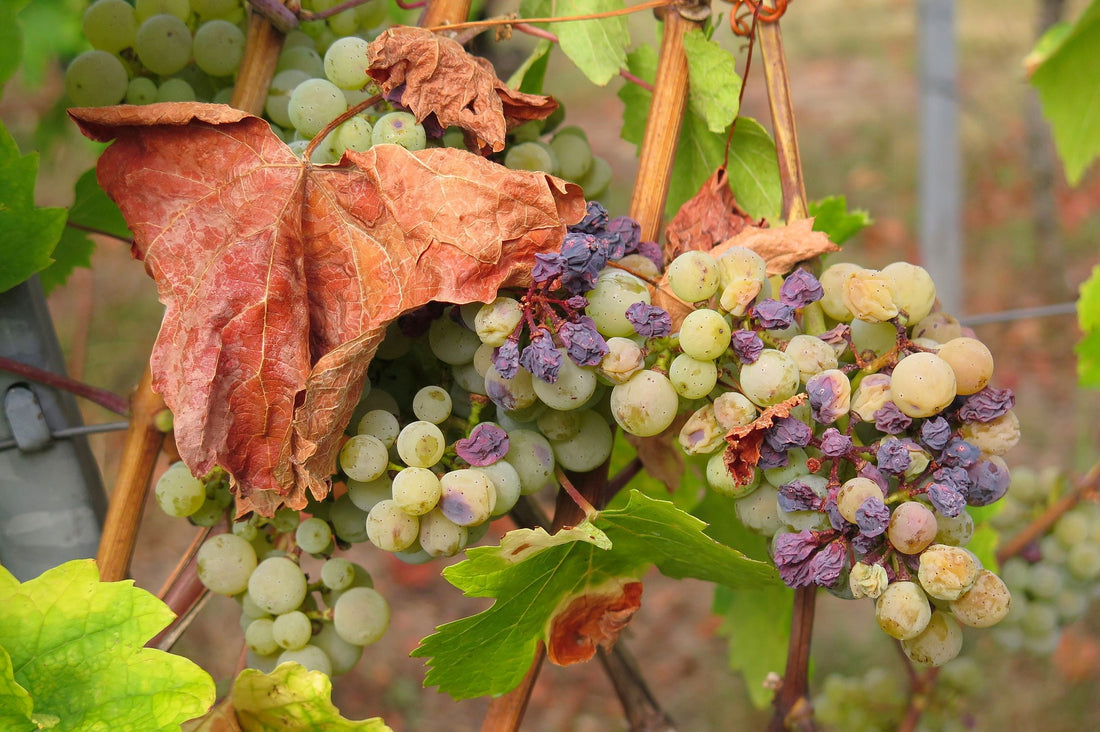
Comparing the nutritional content of Grapes and Raisins
Share
The popularity of raisins and the amount of public data we have on their nutrition makes it an interesting case study to take a look at. A raisin is after all, just a whole grape that has either been sun dried or air dried. Typically it is of the green seedless variety grown mainly in California. This gives us an interesting look into how nutrition is affected by standard drying methods such as air drying and sun drying.
After searching the internet for information on nutritional differences between grapes and raisins most of the information published can be bit misleading so I decided to take a deeper dive into comparing them nutritionally. The nutritional data I'm using is simply pulled from the USDA Nutritional Database. You can find the data for Raw Grapes here, and the data for Raisins here.
The major difference between a raw grape and a raisin is the amount of water in the fruit. A raw grape is on average 80.54% water and a raisin is 15.43%. If we were looking at nutrition in terms of weight, raisins would be far superior simply because they have much less water in them. However, the human body doesn't care how many grams you eat, it cares how many calories you eat. Therefore a better way to compare them is look at the nutrients per calorie which will give us a better understanding of what happens to the nutrients when we dry a grape into a raisin.
From the table below we laid out the USDA nutrient database numbers for each nutrient per 100 g. We then calculated a column to show each nutrient per calorie. Then the far right column shows the % difference comparing the per calorie nutrients of the raw grape to the raisin (you may need to scroll to the right to see it). The data shows most of the macro nutrients and minerals are very similar. This is expected because drying does not generally change the macro nutrients or minerals and the differences we do see are most likely due to a crop to crop variance that occurs naturally from grape to grape depending on the climate, soil, etc. of when and where the grape or raisin was grown. The interesting thing to note is the vast difference between the vitamin levels per calorie. Vitamins are often unstable when heat, light, & oxygen are applied (a.k.a. when something is dried). You can see that for all the vitamins and phytonutrients listed, the amount per calorie from raw grapes is significantly higher than that of raisins. For example a grape compared to a raisin has:
- 18 times more Vitamin K per calorie.
- 6.8 times more Vitamin E per calorie.
- 6 times more Vitamin C per calorie.
- 2.8 times more Thiamine (Vitamin B1) per calorie.
- 2.4 times more Riboflavin (Vitamin B2) per calorie.
A few of the vitamins and phytonutrients such as Vitamin A, Lutein & Zeaxanthin seem to be completely destroyed through the drying process while these nutrients are present in the raw grapes.
We don't show this information to discourage you from eating raisins. In fact, raisins are much higher in nutrition than most of the processed foods we eat today and we think they are comparatively a very healthy food. But nothing comes close to the nutritional power of fresh fruits such as grapes. At KOYAH we would be very interested in comparing the nutritional content of Freeze-dried grapes to raw grapes & raisins. We expect the nutritional content of a freeze-dried grape to be very similar to that of the raw grapes based on what we know of the superiority of freeze-drying and how it better preserves the vitamins and phytonutrients in raw produce. But until we are able to create the powder and do the tests, we will not know for certain. We'll keep you posted.
| 09298, Raisins, dark, seedless | 09132, Grapes, red or green (European type, such as Thompson seedless), raw | ||||
| Per 100 g | Per Calorie | Per 100 g | Per Calorie | Per Calorie Grape to Raisin ratio | |
| Water (g) | 15.43 | 0.0516 | 80.54 | 1.1672 | 2262% |
| Calories | 299.00 | 1.0000 | 69.00 | 1.0000 | 100% |
| Macro Nutrients | |||||
| Protein (g) | 3.07 | 0.0103 | 0.72 | 0.0104 | 102% |
| Fat (g) | 0.46 | 0.0015 | 0.16 | 0.0023 | 151% |
| Ash (g) | 1.85 | 0.0062 | 0.48 | 0.0070 | 112% |
| Carbohydrate (g) | 79.18 | 0.2648 | 18.10 | 0.2623 | 99% |
| Fiber (g) | 3.70 | 0.0124 | 0.90 | 0.0130 | 105% |
| Sugar (g) | 59.19 | 0.1980 | 15.48 | 0.2243 | 113% |
| Minerals | |||||
| Calcium (mg) | 50.00 | 0.1672 | 10.00 | 0.1449 | 87% |
| Iron (mg) | 1.88 | 0.0063 | 0.36 | 0.0052 | 83% |
| Magnesium (mg) | 32.00 | 0.1070 | 7.00 | 0.1014 | 95% |
| Phosphorus (mg) | 101.00 | 0.3378 | 20.00 | 0.2899 | 86% |
| Potassium (mg) | 749.00 | 2.5050 | 191.00 | 2.7681 | 111% |
| Sodium (mg) | 11.00 | 0.0368 | 2.00 | 0.0290 | 79% |
| Zinc (mg) | 0.22 | 0.0007 | 0.07 | 0.0010 | 138% |
| Copper (mg) | 0.32 | 0.0011 | 0.13 | 0.0018 | 173% |
| Manganese (mg) | 0.30 | 0.0010 | 0.07 | 0.0010 | 103% |
| Selenium (µg) | 0.60 | 0.0020 | 0.10 | 0.0014 | 72% |
| Vitamins and Phytonutrients | |||||
| Vitamin C (mg) | 2.30 | 0.0077 | 3.20 | 0.0464 | 603% |
| Thiamin (mg) | 0.11 | 0.0004 | 0.07 | 0.0010 | 282% |
| Riboflavin (mg) | 0.13 | 0.0004 | 0.07 | 0.0010 | 243% |
| Niacin (mg) | 0.77 | 0.0026 | 0.19 | 0.0027 | 106% |
| Panto Acid (mg) | 0.10 | 0.0003 | 0.05 | 0.0007 | 228% |
| Vitamin B6 (mg) | 0.17 | 0.0006 | 0.09 | 0.0012 | 214% |
| Total Folate (µg) | 5.00 | 0.0167 | 2.00 | 0.0290 | 173% |
| Total Choline (mg) | 11.10 | 0.0371 | 5.60 | 0.0812 | 219% |
| Vitamin A (IU) | 0.00 | 0.0000 | 66.00 | 0.9565 | N/A |
| Vitamin A (RAE) | 0.00 | 0.0000 | 3.00 | 0.0435 | N/A |
| Alpha-Carotene (µg) | 0.00 | 0.0000 | 1.00 | 0.0145 | N/A |
| Beta-Carotene (µg) | 0.00 | 0.0000 | 39.00 | 0.5652 | N/A |
| Lutein & Zeaxanthin (µg) | 0.00 | 0.0000 | 72.00 | 1.0435 | N/A |
| Vitamin E (mg) | 0.12 | 0.0004 | 0.19 | 0.0028 | 686% |
| Vitamin K (µg) | 3.50 | 0.0117 | 14.60 | 0.2116 | 1808% |







6 comments
I like to eat soaked raisins in yogurt with a little bit of almond butter, honey/ maple syrup and sometimes cinnamon. Yummy